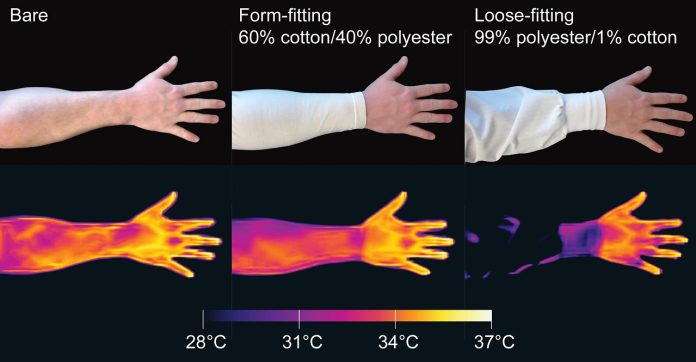
Mosquitoes might seem like nothing more than a minor nuisance, but in many parts of the world, they are a significant health threat.
Species like Aedes aegypti and Anopheles gambiae are known to spread deadly diseases like dengue, Zika, yellow fever, and malaria.
In fact, the World Health Organization estimates that malaria alone causes over 400,000 deaths every year, earning mosquitoes the title of the deadliest animals on the planet.
While male mosquitoes are harmless, female mosquitoes need blood to develop their eggs. To find a host, they rely on a range of senses.
Over the past century, scientists have studied how mosquitoes track down humans, discovering that these insects use a combination of cues such as carbon dioxide from our breath, body odor, and heat from our skin.
But a new study led by researchers at UC Santa Barbara has revealed another sense mosquitoes use: the ability to detect infrared radiation from our body heat.
Infrared radiation is a type of energy that is emitted by anything warm, including human skin. The UC Santa Barbara team found that when this infrared radiation is combined with carbon dioxide and human odors, mosquitoes are twice as likely to seek out a host.
The mosquitoes in the study overwhelmingly flew toward a source of infrared radiation that was about the same temperature as human skin.
The researchers also discovered how mosquitoes sense this infrared radiation. The key lies in the tips of their antennae, which contain special heat-sensing neurons. These neurons are equipped with a protein called TRPA1, which acts like a temperature sensor.
When infrared radiation heats up these neurons, TRPA1 is activated, allowing the mosquito to detect the heat from a distance.
Interestingly, the study also found that this infrared detection system is effective at distances of up to 70 centimeters (about 2.5 feet).
This is possible because the infrared radiation warms the peg-like structures in the mosquito’s antennae, which are shielded from other types of heat, allowing the mosquito to detect the radiation indirectly.
However, the study revealed that TRPA1 alone might not explain how mosquitoes can detect infrared from such a distance. The researchers found that two other proteins, called Op1 and Op2, also play a role in extending the sensitivity of the mosquito’s heat-sensing ability.
These proteins, which are related to those used in vision, taste, and temperature sensing in other animals, help trigger TRPA1 at lower levels of infrared radiation. This combined detection system allows mosquitoes to sense our body heat from further away.
This discovery has important implications for controlling mosquito-borne diseases. By understanding how mosquitoes locate humans, scientists can develop better methods for keeping them at bay.
For example, mosquito traps that incorporate infrared radiation could become more effective. Additionally, the findings explain why loose-fitting clothing is particularly good at preventing bites—it helps to block the infrared radiation that mosquitoes use to detect us.
The spread of mosquito-borne diseases is a growing concern, especially as climate change and global travel allow mosquitoes like Aedes aegypti to move into new regions, including parts of the United States where they were not previously found.
This research not only helps us understand how mosquitoes track humans but also opens up new possibilities for preventing the spread of deadly diseases.
In addition to the UC Santa Barbara team, scientists Vincent Salgado and Andreas Krumhotz also contributed to this study, providing valuable insights into the battle against these tiny but deadly insects.
Source: KSR.



